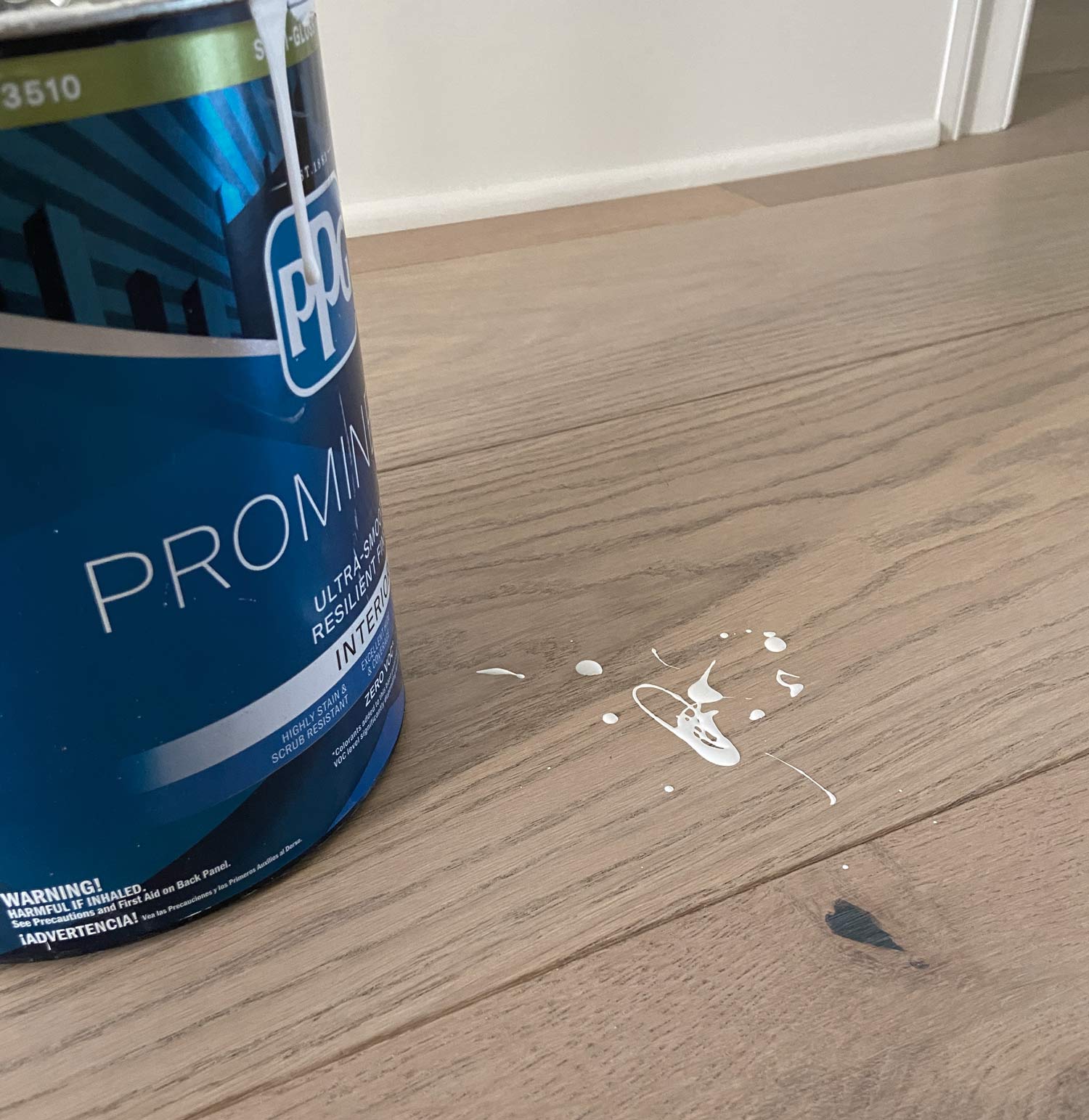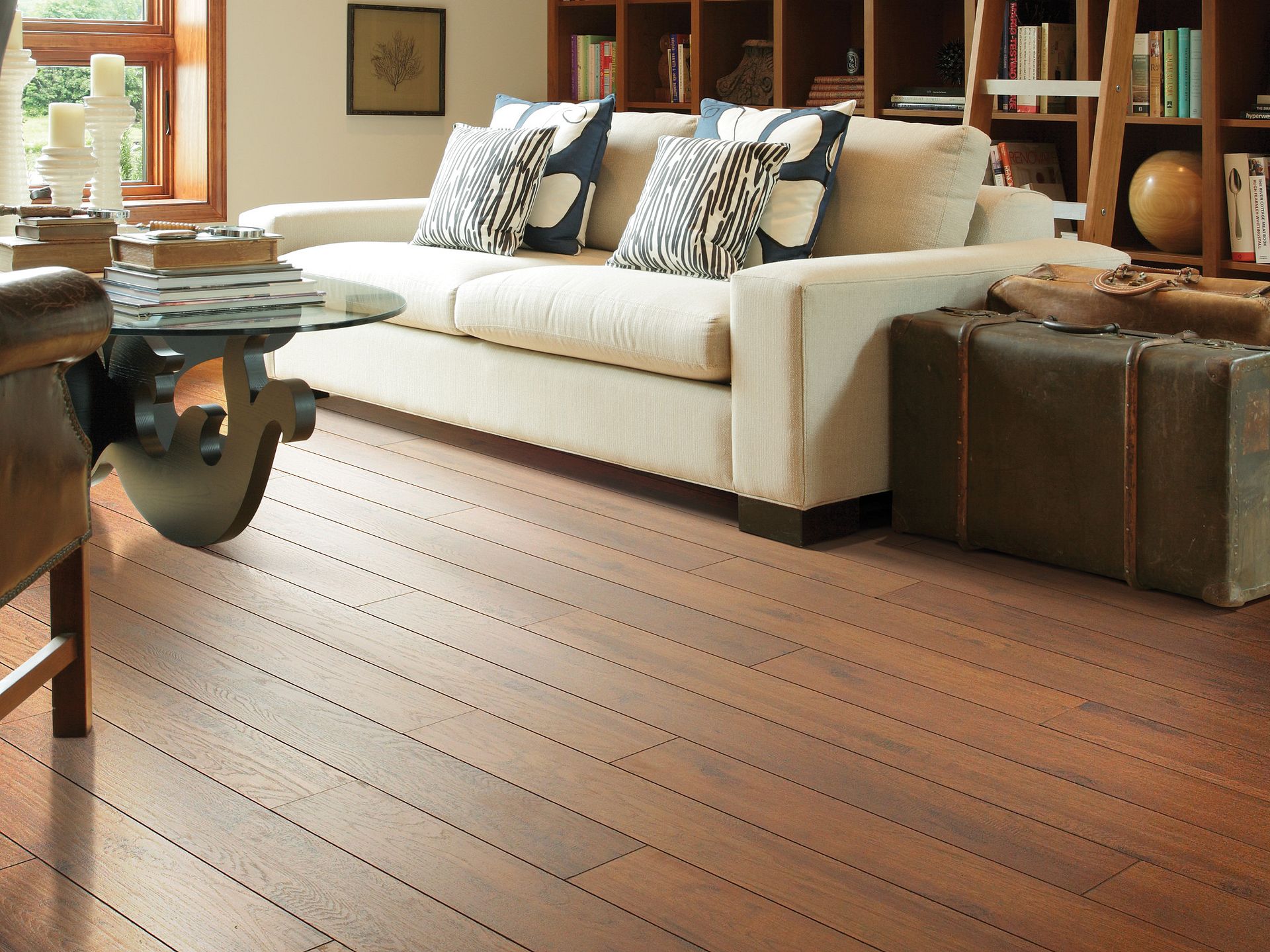Acetone can damage laminate floor due to its strong chemical properties. When applied on laminate flooring, acetone can cause discoloration, swelling, and even strip away the protective top layer, resulting in permanent damage.
It is important to avoid using acetone or any harsh chemicals on laminate floors to maintain their longevity and appearance. In case of spills or stains, it is recommended to clean laminate floors with mild soap and water or use laminate floor cleaners specifically designed for this type of flooring.
By following proper maintenance guidelines, you can prevent damage and keep your laminate floor looking pristine for years to come.
Understanding Laminate Flooring
| Composition of laminate flooring | How it differs from other types of flooring |
| Laminate flooring is made up of multiple layers that are fused together using a lamination process. The top layer, also known as the wear layer, is designed to withstand daily wear and tear. It consists of a high-resolution image of wood or stone, which gives the flooring its aesthetic appeal. The core layer is made of fiberboard or high-density fiberboard (HDF), providing stability and resistance against moisture. Lastly, the bottom layer, also known as the backing layer, provides additional support and helps protect against moisture from the subfloor. | Unlike other types of flooring, such as hardwood or tile, laminate flooring offers several advantages. Firstly, it is highly durable and resistant to scratches, stains, and fading. Secondly, it is cost-effective and can replicate the look of more expensive flooring options. Additionally, laminate flooring is easy to install and maintain. It is also a popular choice for those with allergies as it does not trap dust or allergens. However, it is important to note that while laminate flooring is generally resistant to moisture, excessive exposure to water or dampness can cause damage. Therefore, it is essential to promptly clean up any spills and avoid using excessive water during cleaning. |
Common Concerns About Laminate Flooring
Many people have concerns about whether acetone can damage laminate floors. Laminate flooring is known for its durability and resistance to everyday household substances, including spills and stains. The unique construction of laminate floors, with a top layer of protective melamine, helps to safeguard against damage.
When it comes to spills and stains, laminate flooring is generally resistant to liquids and can easily be wiped clean with a damp cloth. However, it is important to promptly clean up any spills to prevent the liquid from seeping into the seams and causing potential damage.
While acetone is known for its ability to remove tough stains, it is best to avoid using it directly on laminate floors. Acetone can potentially strip away the protective top layer of the laminate, leading to damage and discoloration. Instead, it is recommended to use mild cleaners specifically designed for laminate flooring. These cleaners are formulated to effectively remove stains and maintain the integrity of the floor surface.
Overall, with proper care and maintenance, laminate flooring can continue to look great and withstand everyday use without significant damage from spills or stains.
Exploring The Impact Of Acetone On Laminate Flooring
Chemical properties of acetone: Acetone is a commonly used solvent that is known for its strong
cleaning properties and ability to dissolve various substances. It is a colorless liquid with a distinct
odor, and its rapid evaporation rate makes it popular for use in nail polish removers, adhesives, and
paints.
Effects of acetone on laminate flooring: When it comes to laminate flooring, it’s important to be cautious when using acetone as a cleaning agent. While acetone is generally safe for laminate floors, prolonged exposure or using acetone-based products excessively can lead to damage.
Acetone can potentially remove the protective layer on the laminate surface, causing it to lose its shine
and become dull. It can also cause the laminate to warp or buckle, particularly if it seeps between the
floorboards. Additionally, acetone may stain the laminate or cause discoloration in certain cases.
To prevent damage to your laminate flooring, it is recommended to use acetone sparingly and in a well-ventilated area. Before using any cleaning product containing acetone, it’s advisable to test a small, inconspicuous area of the floor first to ensure compatibility.
Debunking Myths And Misconceptions
Contrary to popular belief, using acetone on laminate flooring does not necessarily result in damage. There is a common misconception that acetone can strip the protective layer of laminate flooring, but that is not always the case. Acetone is a strong solvent, so it is important to use it cautiously and sparingly. When used properly, acetone can effectively remove stubborn stains or adhesive residue from laminate floors without causing any harm.
Another myth associated with acetone is that it can cause discoloration or fading. While acetone has the potential to discolor certain surfaces, laminate flooring is typically resistant to such effects. However, it is always a good idea to spot test a small, inconspicuous area before using acetone on a larger section of the floor.
Extent Of Damage And Challenges Faced
The use of acetone on laminate flooring can cause various levels of damage, depending on the extent and duration of contact. Assessing the level of damage is important to determine the appropriate course of action for restoration or repair. Acetone can potentially strip away the protective coating on laminate floors, leading to discoloration, dullness, or even warping. It is essential to promptly address any spills or accidents involving acetone to minimize potential damage.
Restoring or repairing laminate flooring that has been damaged by acetone can be challenging. Replacing individual damaged planks may be necessary in severe cases, as attempting to restore the finish may not yield satisfactory results. However, for minor damage, sanding the affected area and applying a new finishing coat might be sufficient.
Preventive Measures And Best Practices
Laminate floors are a popular choice due to their durability and aesthetic appeal, but they can be vulnerable to damage from certain substances, including acetone. To protect your laminate flooring from acetone exposure, there are several preventive measures and best practices you can follow.
First and foremost, it is important to avoid using acetone directly on the laminate floor. Acetone is a powerful solvent that can strip away the protective coating and cause discoloration or warping of the laminate planks. Instead, opt for gentle cleaning solutions that are specifically designed for laminate floors.
When cleaning your laminate floor, use a damp mop or cloth with a mild cleaner that is labeled as safe for laminate flooring. Avoid excessive moisture, as it can seep into the joints and cause swelling or buckling. Additionally, consider using a microfiber mop or cloth, as it is less likely to leave streaks or residue on the surface.
If you encounter a spill or stain on your laminate floor, it is important to act quickly. Blot the area with a clean cloth or paper towel to absorb any liquid, then clean the spot with a gentle cleaner. Avoid scrubbing or using abrasive materials, as they can damage the laminate surface.
In summary, to protect your laminate flooring from acetone exposure, avoid using acetone directly on the floor and opt for gentle cleaning solutions labeled as safe for laminate. Clean spills and stains promptly using a blotting motion and avoid excessive moisture. By following these preventive measures and best practices, you can keep your laminate floor looking its best for years to come.
Professional Help And Expert Advice
When it comes to laminate floor damage caused by acetone, it is essential to seek professional help and expert advice. Gaining assistance from flooring specialists is always recommended to ensure the best course of action is taken. These specialists have the knowledge and experience to assess the severity of the acetone damage and provide appropriate solutions.
In severe cases of acetone damage to laminate floors, it is crucial to take recommended actions. These actions may include sanding and refinishing the affected area to restore the floor’s appearance and integrity. However, it’s important to note that attempting DIY methods without professional guidance can potentially worsen the damage.
By consulting with flooring specialists, homeowners can receive accurate assessments, effective solutions, and valuable tips on how to prevent further damage. Trusting the expertise of professionals is key to ensuring the preservation and longevity of laminate floors.

Frequently Asked Questions For Will Acetone Damage Laminate Floor
Does Acetone Ruin Laminate Flooring?
Yes, acetone can damage laminate flooring. It can cause the top layer of the laminate to dissolve or warp the surface. Avoid using acetone on laminate flooring to prevent any potential damage.
What Will Ruin Laminate Flooring?
Improper cleaning, excessive moisture, dragging heavy furniture, not using felt pads, and sharp objects can ruin laminate flooring.
What Does Acetone Do To Floors?
Acetone can damage floors by causing discoloration, fading, and even eroding certain types of flooring materials. Its strong chemicals can strip away finishes and sealants, leaving the floor vulnerable to further damage. Proper caution should be taken when using acetone near floors to prevent any potential harm.
Will Rubbing Alcohol Damage Laminate Flooring?
Rubbing alcohol can damage laminate flooring. It can cause the laminate to swell, warp, or discolor. Avoid using it for cleaning your laminate floors to keep them in good condition.
Conclusion
While acetone is an effective solvent for removing tough stains and adhesives, it can potentially damage laminate floors. It is essential to exercise caution and conduct a spot test before using acetone on your laminate floor. By following proper cleaning techniques and using gentle alternatives, you can maintain the durability and appearance of your laminate flooring for years to come.




